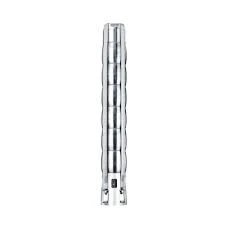តុលា . 31, 2024 18:42 Back to list
Troubleshooting a Submersible Sump Pump That Isn't Functioning Properly
Troubleshooting a Submersible Sump Pump That Is Not Working
A submersible sump pump is an essential device for homeowners, particularly in areas prone to flooding. It effectively removes excess water from basements and crawl spaces, preventing damage to your property. However, like any mechanical device, sump pumps can experience issues that may lead to them not functioning correctly. If you find that your submersible sump pump is not working, here are some troubleshooting steps to diagnose and possibly fix the problem.
1. Check the Power Supply
The first step in troubleshooting a non-working submersible sump pump is to ensure that it is receiving power. Check the outlet where the pump is plugged in. You can test it by plugging in another device to see if it powers on. If there's no power at the outlet, you may need to check your circuit breaker or fuse box. Sometimes a tripped breaker or blown fuse can be a quick fix to get your sump pump running again.
2. Inspect the Float Switch
The float switch is a critical component of the sump pump, as it regulates when the pump turns on and off based on the water level. If the float switch is stuck, the pump may not activate. Check for any obstructions, such as debris or dirt that might be preventing the float from moving freely. If the float appears to be damaged or malfunctioning, consider replacing it, as it is vital for the pump’s operation.
3. Check for Clogs in the Discharge Pipe
A blockage in the discharge pipe can prevent water from being expelled properly, causing the sump pump to become ineffective. Look for any signs of clogs or obstructions in the pipe. Leaves, dirt, or even ice (in colder months) can block the discharge pipe. Clear any blockages you find to restore proper flow.
submersible sump pump not working

4. Inspect the Impeller
The impeller is responsible for drawing water into the pump and pushing it out through the discharge pipe. If the impeller is jammed or damaged, it can prevent the sump pump from operating. Carefully disassemble the pump to check for debris or damage within the impeller housing. Clean any debris that may be obstructing the impeller and replace it if you notice any signs of wear or damage.
5. Listen for Unusual Sounds
If your pump is running but not pumping water, listen for unusual sounds. A humming noise could indicate that the motor is running, but the pump is not actually moving water due to mechanical failure. Alternatively, a grinding noise may suggest that parts are misaligned or damaged. In either case, further disassembly may be necessary to determine the extent of the problem.
6. Call a Professional
If you've tried all the above steps and your submersible sump pump still isn’t functioning, it may be time to call in a professional. A qualified plumber or technician can diagnose the issue more thoroughly and recommend whether the pump can be repaired or if it needs to be replaced.
In conclusion, a non-working submersible sump pump can be a significant concern, especially in wet seasons. By systematically troubleshooting the issue, you can potentially save yourself time and money. Regular maintenance and inspections can also help prevent future problems, ensuring that your sump pump remains operational when you need it the most.
-
Water Pumps: Solutions for Every Need
NewsJul.30,2025
-
Submersible Well Pumps: Reliable Water Solutions
NewsJul.30,2025
-
Stainless Steel Water Pumps: Quality and Durability
NewsJul.30,2025
-
Powerful Water Pumps: Your Solution for Efficient Water Management
NewsJul.30,2025
-
Oil vs Water Filled Submersible Pumps: Which is Better?
NewsJul.30,2025
-
Deep Well Pumps: Power and Reliability
NewsJul.30,2025
-
 Water Pumps: Solutions for Every NeedWhen it comes to handling dirty water, the dirty water pump is a must-have.Detail
Water Pumps: Solutions for Every NeedWhen it comes to handling dirty water, the dirty water pump is a must-have.Detail -
 Submersible Well Pumps: Reliable Water SolutionsWhen it comes to ensuring a reliable water supply, submersible well pumps are a top choice.Detail
Submersible Well Pumps: Reliable Water SolutionsWhen it comes to ensuring a reliable water supply, submersible well pumps are a top choice.Detail -
 Stainless Steel Water Pumps: Quality and DurabilityWhen it comes to choosing a water pump, the stainless steel water pump price is a crucial factor.Detail
Stainless Steel Water Pumps: Quality and DurabilityWhen it comes to choosing a water pump, the stainless steel water pump price is a crucial factor.Detail
